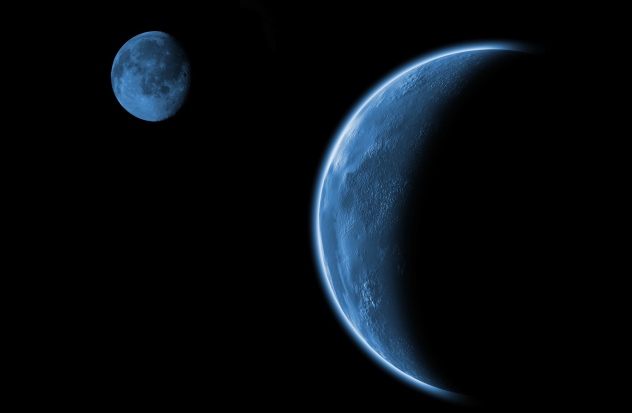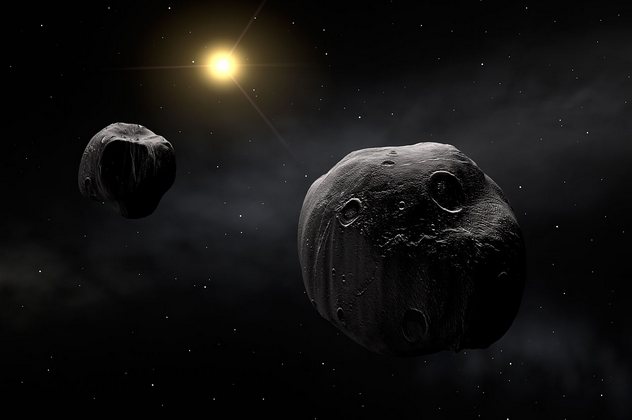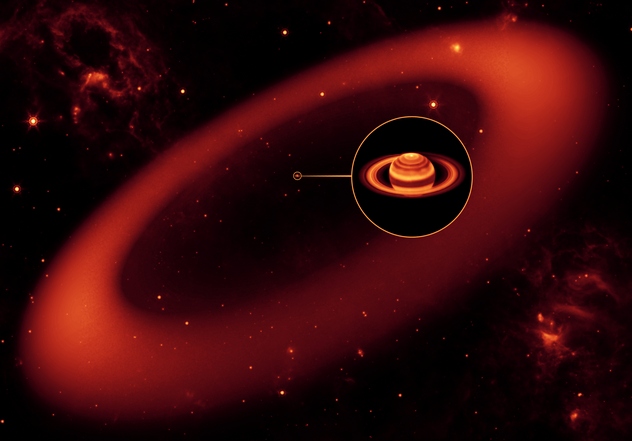 Facts
Facts  Facts
Facts  Crime
Crime 10 Dark Details of Australia’s Gruesome Unsolved Wanda Murders
 Humans
Humans 10 Unsung Figures Behind Some of History’s Most Famous Journeys
 Animals
Animals 10 Species That Refused to Go Extinct
 Weird Stuff
Weird Stuff 10 Weird Things People Used to Do at New Year’s
 Our World
Our World 10 Archaeological Discoveries of 2025 That Refined History
 Weird Stuff
Weird Stuff 10 Fascinating Facts You Might Not Know About Snow
 Miscellaneous
Miscellaneous Top 10 Things Crypto Was Supposed to Change & What Actually Did
 History
History 10 Huge Historical Events That Happened on Christmas Eve
 Music
Music 10 Surprising Origin Stories of Your Favorite Holiday Songs
 Facts
Facts Ten Unexpectedly Fascinating Facts About Rain
 Crime
Crime 10 Dark Details of Australia’s Gruesome Unsolved Wanda Murders
 Humans
Humans 10 Unsung Figures Behind Some of History’s Most Famous Journeys
Who's Behind Listverse?

Jamie Frater
Head Editor
Jamie founded Listverse due to an insatiable desire to share fascinating, obscure, and bizarre facts. He has been a guest speaker on numerous national radio and television stations and is a five time published author.
More About Us Animals
Animals 10 Species That Refused to Go Extinct
 Weird Stuff
Weird Stuff 10 Weird Things People Used to Do at New Year’s
 Our World
Our World 10 Archaeological Discoveries of 2025 That Refined History
 Weird Stuff
Weird Stuff 10 Fascinating Facts You Might Not Know About Snow
 Miscellaneous
Miscellaneous Top 10 Things Crypto Was Supposed to Change & What Actually Did
 History
History 10 Huge Historical Events That Happened on Christmas Eve
 Music
Music 10 Surprising Origin Stories of Your Favorite Holiday Songs
10 Bizarre Objects You Didn’t Know Were In Our Solar System
With 4,826 confirmed planets and Kepler candidates and the discovery of a gas giant with a colossal system of 160 rings, it may seem like we know quite a bit about what is out there in the cosmos.
However, the universe loves to confuse us, and—frankly—humanity has yet to come to grips with what is in our own solar system.
10Orcus And Vanth

We have all heard about Pluto, especially after its declassification as a planet in 2006 and its coverage in the news due to the upcoming New Horizons probe flyby. But have you ever heard of what is sometimes referred to as “anti-Pluto“? 90482 Orcus is a Kuiper belt object with almost exactly the same orbital period, inclination, and distance from the Sun as Pluto.
Both Pluto and Orcus also share a 2:3 resonance with Neptune, although Orcus is oriented differently. Not only are their orbits almost identical, but they both have moons that are very large relative to their size. Pluto’s moon Charon is half the size of Pluto, and Vanth has been estimated to be one-third the size of Orcus. The name “Orcus” was chosen because it’s the Etruscan equivalent for the Roman “Pluto.”
The surface of Orcus is covered with crystalline water ice and, possibly, ammonia ice, which indicates that some sort of geological activity and cryovolcanism may have taken place in the past. If the presence of ammonia is confirmed, Orcus could help scientists understand the formation of other trans-Neptunian objects.
990 Antiope

The number in 90 Antiope’s name signifies that it was the 90th asteroid discovered, although that is actually a matter for debate. You see, this rare find, orbiting within the asteroid belt between Jupiter and Mars, is a binary system (also known as a “double asteroid”). So Antiope is technically the 90th and 91st asteroid discovered.
When it was first discovered, Antiope was cast aside, considered to be no different from countless other small objects orbiting within the asteroid belt. However, in 2000, the 10-meter (33 ft), ground-based telescope “Keck II” in Hawaii observed that the large singular blob seen by older telescopes was actually two smaller bodies orbiting each other. Each of them is approximately 86 kilometers (53 mi) in diameter, and their centers are separated by a distance of only 171 kilometers (101 mi).
It is not uncommon for two objects to orbit each other to some degree, but since the difference in mass of each component of Antiope is so small, the best way to imagine what it looks like is to think of two spinning bowling balls held together by piece of string.
8Saturn’s Hexagon
We all know about Saturn and its rings, but have you ever heard about its cloud patterns? In the early 1980s, the Voyager mission made a surprising and unprecedented discovery, which was confirmed by a visit from the Cassini spacecraft. Encompassing all of Saturn’s north pole is a giant hexagonal storm with sides longer than the diameter of Earth. The storm has been raging for over 30 years. Spookily, the hexagon doesn’t move with the rest of the clouds on the planet, and since it possesses such a large degree of geometric precision, countless conspiracy theories have sprung up about it. (Thankfully, most of them are not serious.)
While the phenomenon is still not fully explained, scientists have several ideas that help explain exactly what is going on using “fluid dynamics.” Lab experiments have shown that in a fluid where the center is spinning faster than the outer sides, turbulence starts to create edges. At high enough speeds, polygon shapes begin to appear. Since the winds in the hexagon have been clocked at 322 kilometres per hour (200 mph), crisp sides have formed. While this sounds like a pretty solid theory, some are still convinced that it is, of course, an opening to another dimension.
7Haumea

Before it was officially named, 136108 Haumea was known as “Santa,” due to being discovered on December 28, 2004. This is actually rather fitting, since Haumea is a rather “gifted” and unique dwarf planet. Scientists initially found it hard to take measurements of Haumea because of its extremely rapid rotation, faster than any other known body in the solar system—a day is only 3.9 hours long.
The rotation itself would not cause too many problems, but Haumea is not shaped like any other planet. Due to its composition of rock and ice and its very low gravity holding it together, the immense centrifugal force has stretched the surface into what is known as a “scalene ellipsoid.” This means that the distance between its poles is 996 kilometers (619 mi), but its longest axis is a whopping 1,960 kilometers (1,218 mi) across.
Not only does Haumea possess some of the most interesting rotational properties, it also has two moons, Hi’iaka and Namaka. Not bad for something with only 6 percent the mass of our moon.
6Pan And Atlas
These two moons of Saturn have a lot in common and are the two closest moons to their parent body. What makes these two so special is the fact that they seem to have copied the rings of Saturn themselves, taking on a form that is straight out of a 1950s UFO B movie. Pan, being what is known as a “shepherd moon,” got its name from the god of shepherds, while Atlas was named after the titan who “held the sky on his shoulders,” since it supports the rings of Saturn.
Atlas, the flatter of the two, is only 19 kilometers (12 mi) from pole to pole but 46 kilometers (29 mi) across its waist. The elongated equators of these moons cannot be explained in the same way as Haumea, since they do not spin fast enough to bulge. Rapid rotation also creates a uniform elongation, and these moons are definitely not regular. It turns out that after many computer simulations, the University of Paris has found the answer: accretion disks. As a disk of debris spins, edges of the structure flatten out. During the formation of Saturn’s moons, accretion disks made of dust from Saturn’s rings formed around the tiny moons and eventually accumulated on their equators, creating their vast, bulging ridges.
52008 KV42
Why do so many astronomical objects have annoying names? Luckily, this comet was nicknamed “Drac,” after Dracula—due to his ability to walk on walls—which is much easier to say. What does walking on walls have to do with a comet? Well, Drac was the first trans-Neptunian object discovered to orbit the Sun backward—albeit slowly, taking 306 years. (We still don’t quite see the link to walking on walls, either.)
While there were already a few objects known to orbit the Sun backward—you may have heard of Halley’s Comet—they get very close to the Sun in their orbit. Drac, however, never gets any closer than roughly 20 times the distance from the Sun to Earth—equal to the orbit of Uranus. This means that the comet could be the missing link between objects like Halley’s Comet and other debris in the far-out Oort Cloud of comets past Pluto, helping to explain their formation, which is currently a mystery to science.
There are many ideas out there attempting to explain why the orbit of Drac is so unlike almost all others. One of the most interesting prospects is that it might not have formed together with our solar system at all—otherwise it would orbit in the same direction as everything else. It is entirely possible that the comet could have gotten trapped in our solar system from interstellar space, providing us with an unprecedented amount of information about the cosmos. Interestingly, the topic of retrograde orbits leads us nicely to . . .
4Triton
While it isn’t a household name, some of you have probably heard of Triton before. But hear us out—there is more than meets the eye with this fantastic specimen. Comprising more than 99 percent of all the mass known to orbit Neptune, it’s as if all the gas giant’s awe was condensed into one moon. As shown by the Voyager 2 probe in 1989, Triton is rare among known moons in that it is geologically active: Volcanoes pepper the surface, but they do not spew ash and lava when they erupt, like those on Earth. Instead, they spew water and ammonia.
Being just a bit smaller than our own Moon, Triton is the only large moon in the solar system to orbit backward. Also, being one of the largest known moons in our solar system—larger than Pluto—it has just enough gravity to support a thin atmosphere. Seriously thin. With surface air pressure 50,000 times lower than that of Earth, you couldn’t fly a kite on Triton’s surface. Yet, incredibly, Voyager 2 photographed clouds flying just a few kilometers above the surface.
Finally, Triton is one of the most reflective objects known to science, reflecting 60–95 percent of all light that hits it. To put that into perspective, the Moon—which is able to cast shadows on Earth at night—reflects only 11 percent.
3Saturn’s Extra Ring

We’ve mentioned Saturn a few times so far, but it is certainly an incredibly interesting place. While the planet is known for its staggering ring system, only recently did we find out just how far it extended out into space. In 2009, we discovered an enormous ring around Saturn, the farthest and largest band around the ringed world. The ring is tilted 27 degrees from the main rings and starts roughly 128 times the planet’s radius from its surface, extending to 207 times its radius into space. It is so diffuse that it can only be detected in infrared, but it may be the reason behind the two-toned moon, Iapetus.
Saturn’s moon Phoebe orbits within the ring and at the same inclination, so it is very likely that it is the culprit. Dust disperses from Phoebe and falls onto the larger Iapetus, which orbits on the edge of this colossal new ring. Every time Iapetus passes through it, matter collects on its equator. After hundreds of thousands of years, this matter seems to have built up, creating the moon’s striking appearance. Now it is just a question of whether it is black with white stripes or white with black stripes.
2Siamese Moons
The moons Janus and Epimetheus are known as the “Siamese moons,” because they share the same orbit and are separated by only 50 kilometers (31 mi)—that’s less than the radius of the moons themselves. Because of this, they are locked in a gravitational tango that causes them to literally swap places every four years. Due to their complex relationship, they will never crash into each other.
Originally, scientists were puzzled as to why data did not match their expectations of the moon they had named “Janus.” In 1978, 12 years after the discovery of their common orbit, we realized that what we had called Janus was actually two separate moons. This was confirmed by the Voyager flyby in 1980. Interestingly, a faint ring of dust is present in the region of their orbits. This suggests that the two moons were once a single larger one that has since broken up, leaving behind trace amounts of rubble.
1Cruithne
After taking a look at stuff way out there in our solar system, let’s head home to Earth and discuss the largely disputed matter of our planet’s second moon. Since 1846, astronomers have been searching for a second moon of Earth. Frederic Petit was the first to claim he had found one. He proposed that it orbited Earth in less than three hours at just 11 kilometers (7 mi) above our planet’s surface. Ever since, many other astronomers have claimed to find a second moon—but to no avail. However, there is one weird exception.
3753 Cruithne is an alien asteroid that orbits the Sun in 364 days, with perfect resonance to that of Earth. This means that, for a short time every year, the 5-kilometer (3 mi) asteroid is part of the Earth system. It reaches its closest point to Earth every November. Technically, it does not count as a moon, since it leaves Earth. But it’s still nice to think that every year, an alien object comes to visit.
I am a student with a love for learning and all things trivial. I strive to find out more about the world and I believe that one of the most interesting ways of learning is to challenge misconceptions—hopefully something my lists will do for you.








